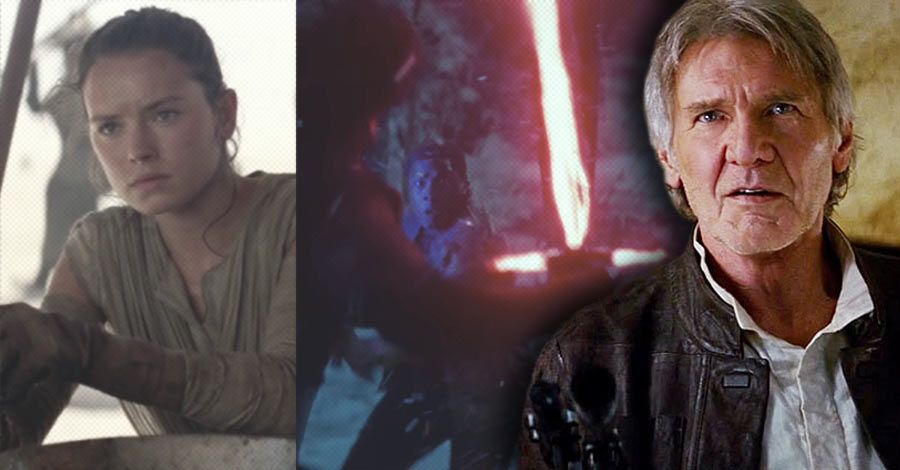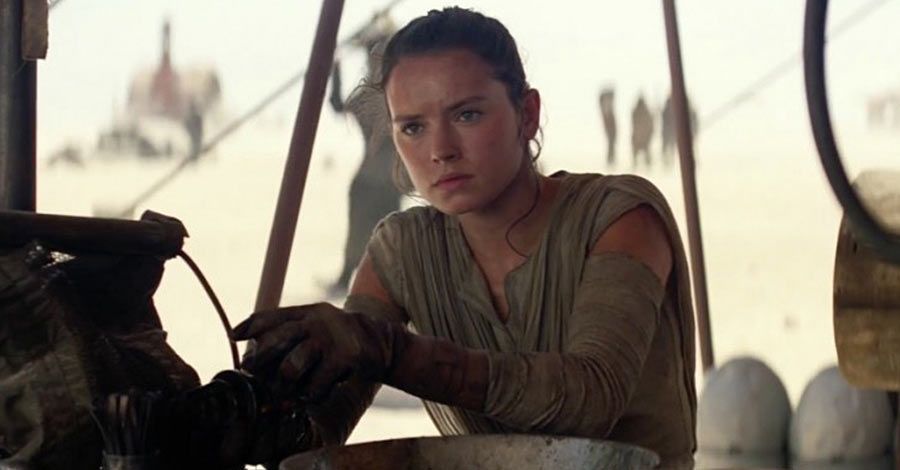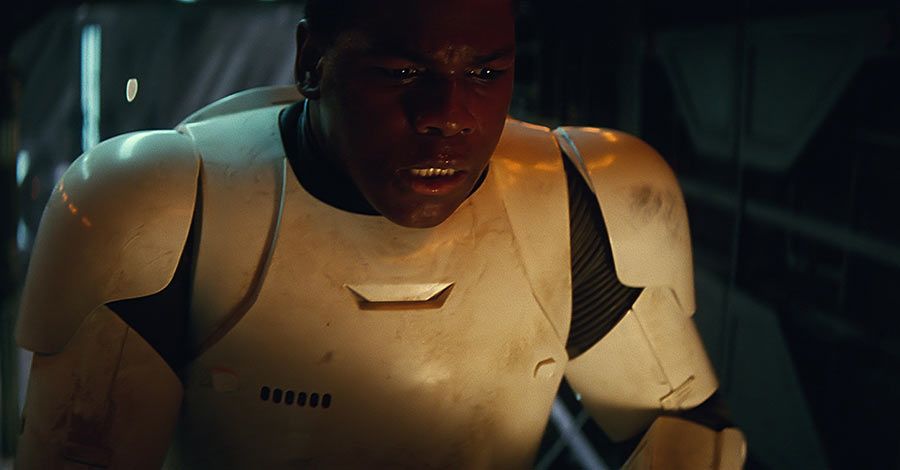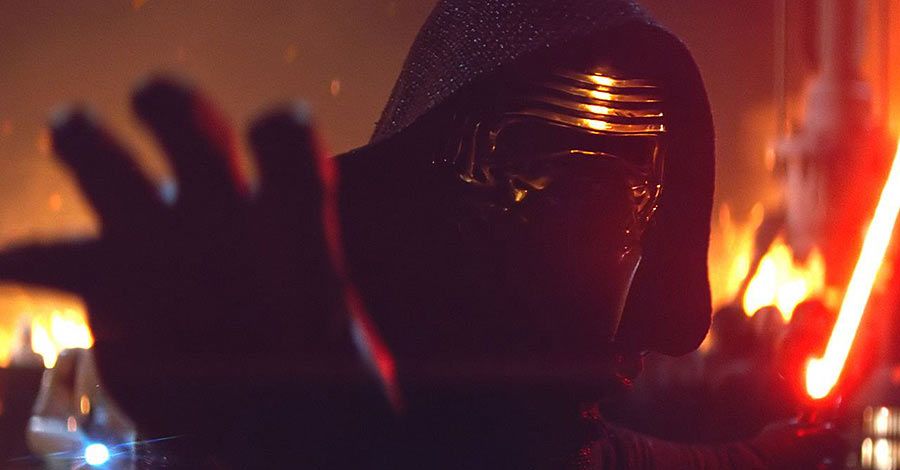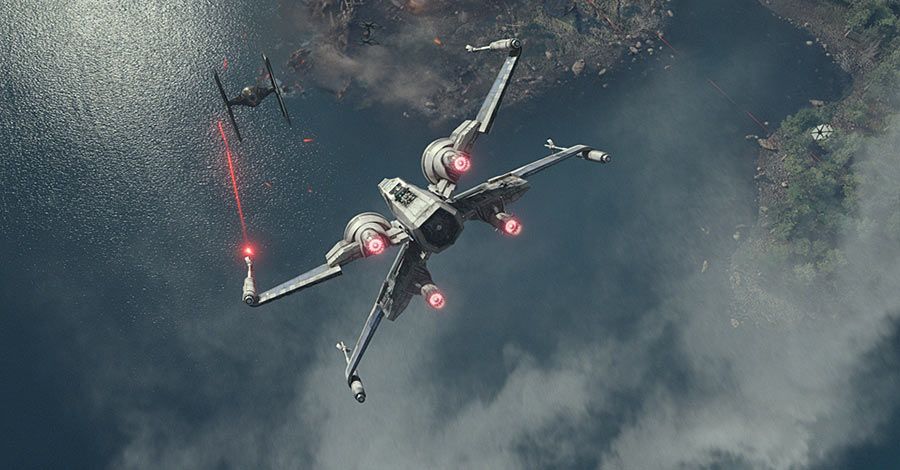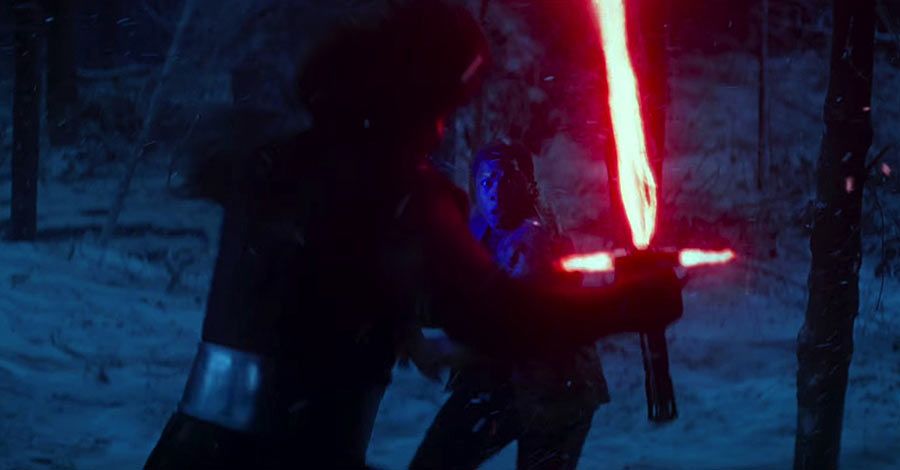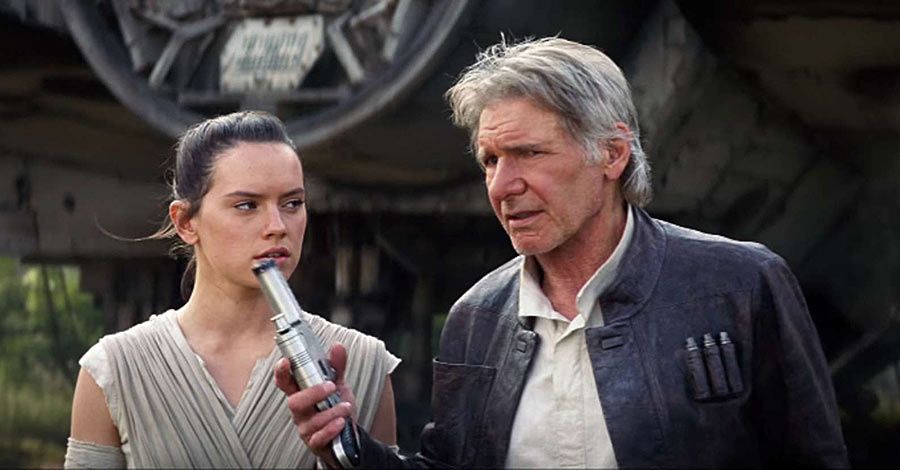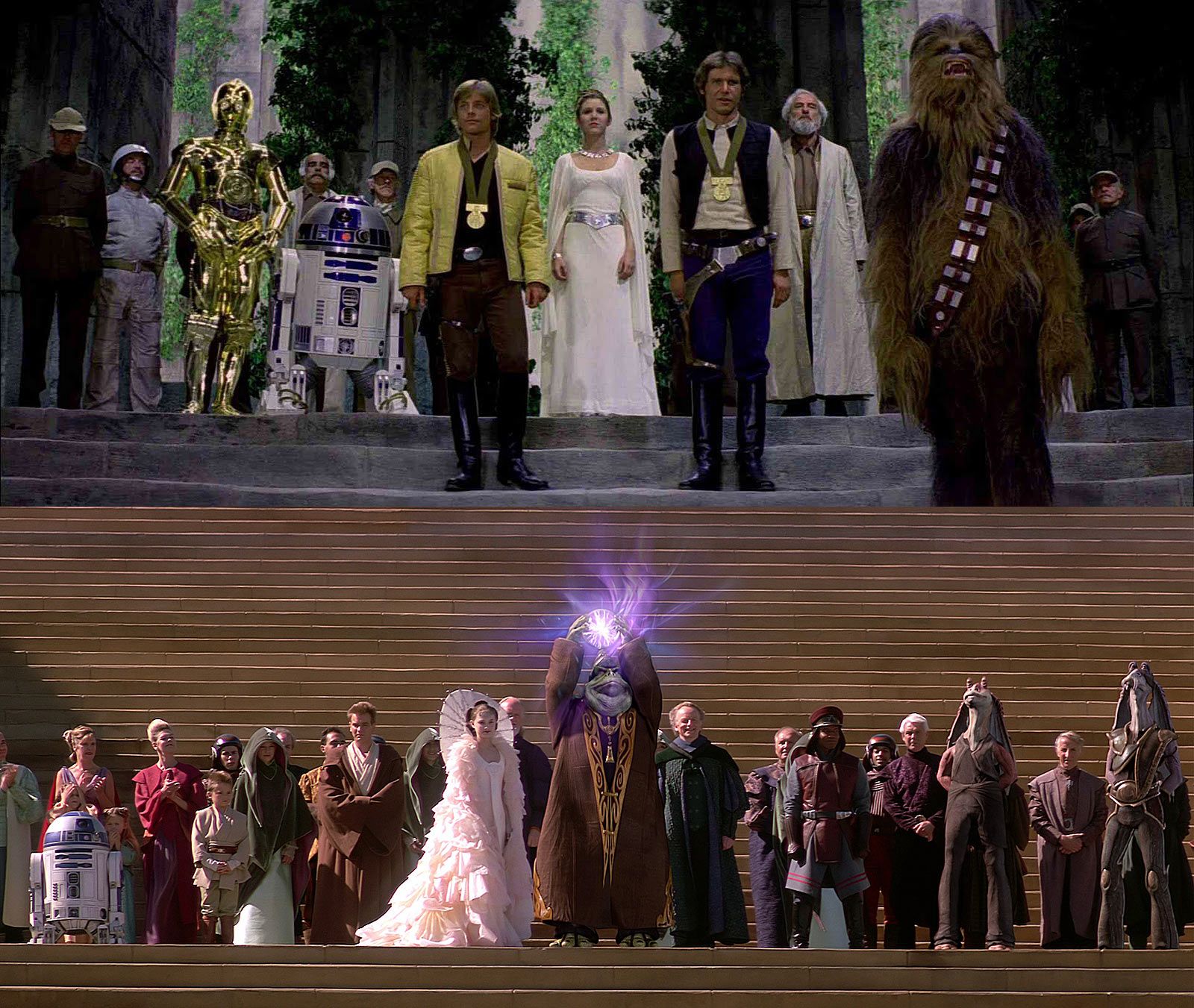Judging by those box office numbers, it's safe to say that nearly everyone has seen "Star Wars: The Force Awakens" -- some, most likely most, more than once. The film is connecting with audiences in a way that many, many films do not; on top of that, the film has received rapturous applause from audiences and critics alike. There's something truly magical about "The Force Awakens" and the phenomenon it's become feels similar to another one -- 1977's "Star Wars."
George Lucas Talks "Star Wars: The Force Awakens": 'They Wanted to Do a Retro Movie'
Of course that's not the only comparison being made between "The Force Awakens" and "A New Hope." Arguably the most persistent critique lobbed at Episode VII is that it features numerous elements that echo the previous "Star Wars" films. The desert planet, the out-of-their-depth Force-sensitive protagonist, cute droids carrying essential information and a planet-destroying super weapon that can only be stopped via a trench run and torpedoes.
While "The Force Awakens" does feature numerous plot elements previously seen in "Star Wars" movies, it remixes them and re-prioritizes those elements while mashing them up with ideas that are completely new. Instead of focusing on what "The Force Awakens" borrows, here are some ideas that it tweaked, enhanced or totally invented for the latest installment in the saga. Of course, major spoilers are ahead.
Rey: The Scavenger Jedi
As the lead of a new Star Wars film (and potentially the lead of an entire trilogy), Rey has become possibly the most analyzed character in "The Force Awakens." Rey's a lot of things that we've seen before: a pilot, a potential Jedi and a hero from a low-class background.
But unlike previous protagonists, Rey's all of those things in one, with the "Jedi" bit being the most intriguing twist. The Jedi we've met in previous movies are all either super confident (most of the Knights and Masters in the prequels) or defined by their association with the Force (the Jedi in the original trilogy). Unlike Luke Skywalker, who rose from farmboy to apprentice quickly, we spend much more time living with Rey's scavenging profession and her hesitancy.
And that hesitancy speaks to one of Rey's most unique -- and original -- traits: her fallibility. She proves herself to be an ace pilot (like leads Luke and Anakin before her), but she's also much more resistant to leaving Jakku than either of her predecessors were when faced with leaving Tatooine. She's a lead that's a bit gullible (she believes Finn's lie about being in the Resistance with no questions asked), a bit over-excitable, and -- yes -- capable of making mistakes. She's bested by Kylo Ren twice with just a wave of his hand and her tech wizardry doesn't prevent her from accidentally unleashing rathtars on Han's ship.
But most unique of all, Rey does not bear the weight of representing all women in the "Star Wars" movies. This immediately makes her unique from Leia and Padme, who had the unenviable task of being the sole female lead in films mostly populated by men. Maz Kanata brings the wisdom, General Leia brings the gravitas and Captain Phasma brings the intimidation. Because of this representation, Rey doesn't have to be everything; she can show fear because Phasma is fearless, she gets to be filled with doubt because Maz is so certain, and she gets to be inexperienced because Leia's done so much.
Imperial Inner Workings
While the Empire posed the definitive threat of the original trilogy, we saw shockingly little of their inner workings. In three films, only Grand Moff Tarkin, Darth Vader and Emperor Palpatine were given real screentime and meaty dialogue. Between Kylo Ren, General Hux, Captain Phasma, Supreme Leader Snoke and FN-2187 (or Finn), we see so much more of the workings of the Empires's follow-up, the First Order. We see an actual Stormtrooper commander and learn that these new grunts are "recruited" from their families at birth; we also learn that Stormtroopers have no name beyond a number. We spend more time in a TIE fighter cockpit than ever before, see Stormtroopers casually strolling through hallways and bear witness to a First Order, uh, pep talk on Starkiller Base.
The maneuvering and bickering between Kylo Ren and General Hux does echo the begrudging alliance between Vader and Tarkin, but "The Force Awakens" goes a step further by showing how they relate to the man in charge of both of them: Snoke. We never saw Tarkin talk to Palpatine.
And let's not undersell how completely new Finn is as a character. The cartoons have shown us plenty of unmasked clonetroopers, but Stormtroopers have remained a mystery since they first appeared almost 40 years ago. Finn's role forces us to put a real face underneath the helmets of characters previously treated as cannon fodder. Finn's inclusion and defection forces viewers to look at Stormtroopers in a whole new way.
Kylo Ren's Conflict
Kylo Ren is not Darth Vader, and that's a statement that can be made both inside and outside of the film. Outside the story, Kylo Ren is a villain that's depicted as temperamental, tortured and impatient. He's reckless and immature in a way that Vader never was after he put on his mask. But that Kylo Ren's still menacing and intimidating; he's not an unstoppable killing machine, but his random bouts of anger make him completely unpredictable. Seeing him trash numerous rooms on his Star Destroyer should shock the audience, as that level of unrestrained rage has yet to be seen in a Star Wars film.
In the story, Kylo Ren's fascination with his heritage and his grandfather makes him completely unique. Yes, his call toward the light is the inverse of the struggle Anakin felt toward the dark, but the film relishes that nuanced twist. Adam Driver runs with it too, creating a frightening yet almost sympathetic character with every tortured stare and gnarled line of dialogue.
Han & Chewie
Even the returning characters get new twists and developments. When we meet Han and Chewie, their relationship itself remains unchanged; Han's still a scoundrel and Chewbacca's still his loyal, lovable and sometimes ferocious friend. But the film doesn't just plop Han and Chewie into the plot and let them run through the motions. Superficially, we get to see both Han and Chewie use the bowcaster -- a weapon that mostly went unfired in its previous appearances. Seeing Han use it might not be a big deal, but it is a new idea.
More substantial, though, is the pair's return to smuggling. Up until this point, we never saw the two of them doing what they professed to do best. The only job we saw them take was transporting a farmboy, a wizard and two droids to Alderaan. After that they became (somewhat) respectable members of the Rebellion, working their way up to command positions. We saw more of Han Solo the general than Han Solo the smuggler. "The Force Awakens" actually shows the two of them in the middle of a job -- one that goes totally wrong.
Most important of all, "The Force Awakens" repositions Han Solo from the snarky outsider to the most important character in the film -- possibly the new trilogy. We see a bit of Han Solo the father, which is a whole different side of the character. His final interaction with his son also shows a paternal tenderness unlike anything that could have been shown in the original trilogy.
Aerial Dogfights
"The Force Awakens" returns to a number of elements we saw in the original trilogy: a desert, the snow, a forest. But the film, unlike every other "Star Wars" film, features very few space battles. Instead, "The Force Awakens" mines a totally new setting for excitement: the air. Yeah, it's a small twist on what's come before, but it pays off with a series of visually compelling dogfights unlike anything we've seen before. Shots of TIE fighters approaching, silhouetted by the sun and X-wings gliding over water put these ships in a totally new context. We're not dealing with the coldness of space, but instead the warmth of the atmosphere as fighters literally zoom over our characters' heads. The film also played up the relationship between the ground and air battles, with Jakku scavengers rushing a crashed TIE felled by the Millennium Falcon and Poe taking out ground troopers from his X-wing up above.
Intense Lightsaber Duels
Like the dogfights, the lightsaber usage in "The Force Awakens" is subtly revolutionary. The original trilogy treating lightsaber duels as quasi-formal fencing affairs, and the prequels amped them up into fast-paced martial arts stunt-fests. In this movie, novices mostly wield lightsabers. Because of that, we get to see them being handled in a totally new way. Finn treats Luke's lightsaber like a brawling weapon, stabbing a Stormtrooper up close with one before going up against a riot control officer's massive weapon. This level of brutal efficiency is unlike anything we've seen before.
But the real revelatory lightsaber battle comes at the end of the film, when Rey and Finn go up against Kylo Ren. We've seen two-on-one fights before, most notably in "The Phantom Menace." But Rey and Finn are not Qui-Gon and Obi-Wan -- and the movie plays that up. If you watch the choreography, Rey and Finn are bad with lightsabers. They swat and swipe at Kylo Ren, swinging for the fences and causing more damage to the trees surrounding them than their enemy. The fight is scrappy, intense and close-up; it's not dazzling or formal, it's tense with tinges of horror as our heroes try their hardest to evade Kylo Ren.
That last point is made clear in Rey's go against Kylo Ren. She spends the entire first half of their fight on the defensive, running and scrambling to get away from him while thrusting and jabbing at him in wild bursts. Her skills with a staff are made clear in the first act, so it makes sense that she can hold her own against Kylo, but just barely. Only when she taps into the Force is she able to find his weakness -- and even then, the battle is decided more by willpower and luck than skill.
Legacy
By their definition, the prequels could not plausibly explore the legacy of these characters since most of them hadn't even been born yet. And since the original trilogy was made decades before the prequels, there's very little in-story reverence for Obi-Wan, Yoda and Vader. But "The Force Awakens" feels the legacy of the franchise in the story as much as the fans do outside of it. The movie treats the amazing feats of our heroes as myths and legends, or hearsay whispered about in the Outer Rim. This real sense of legacy carries through to the characters, as they speak of Luke with reverence and Vader with trembling respect. Han himself even gets called a war hero and, spoiler alert again, his death feels more like a gut punch than Obi-Wan's originally did since we know Han from three previous movies. "The Force Awakens" feels unlike any other Star Wars movie because it's the first one that's able to explore the legacy of all that's gone before.
The Final Shot
The previous trilogy-starters, "A New Hope" and "The Phantom Menace," both end with our heroes lined up at a celebration following the destruction of the Death Star and the defeat of the Trade Federation. "The Force Awakens" also has a shot like that at the end, as the gathered Resistance fighters line up to see Rey, R2-D2 and Chewbacca off in the Millennium Falcon. But then... the movie keeps going.
We travel to an island on a distant planet and watch Rey climb a long trail of stone stairs, reaching the top to find a shrouded man. Luke Skywalker removes his hood, turns, sees Rey offering him back his old lightsaber, an aerial shot sweeps around the two of them and it ends.
No other "Star Wars" movie has ended like that -- and this is a franchise that loves callbacks. The movies usually end on group shots, and here's this, a dizzying one-on-one stare down that asks an infinite number of questions. Our heroes are scattered (in fact, Rey and Poe never even met) and Rey stands before a Jedi. Does Luke recognize her? Does Rey want to be trained? Will Luke train her? "The Force Awakens" pays tribute to "A New Hope" in a number of ways, but this purposefully open-ended and intimate ending is unlike anything we've seen before.

